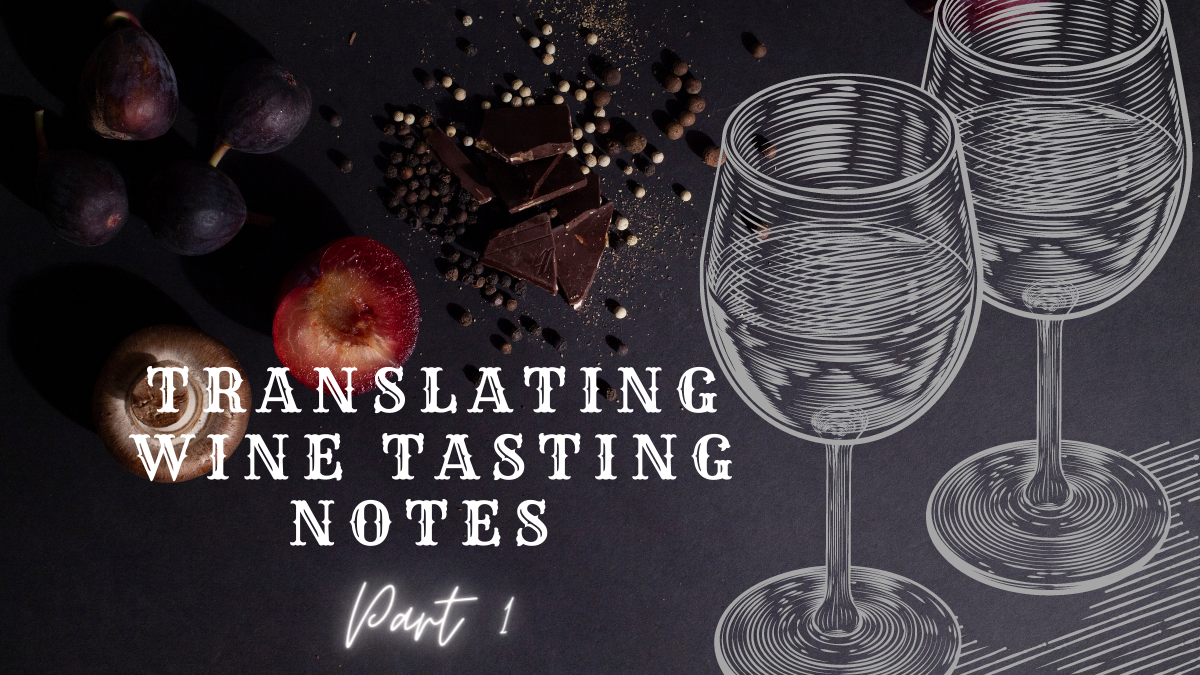You’re at a winery tasting room and are presented with the list of wines offered that day, each detailed with poetic verbiage describing the juice you’re about to taste. Or, you’re at home popping open a bottle of wine, skimming the back label which portrays itself through superfluous phrasing that causes your eyes to roll back in your head.
Oftentimes this lyrical language is spoken by sommeliers at a restaurant or tasting-room staff, and while you nod along, the words are cruising in one ear and out the other. To aid in your memory retention of suggested aromas and flavors, we’ve put together this handy, two-part guide to translating wine tasting notes. We will address common phrases used to paint the descriptive picture of wine and real-life comparisons of what that might smell and taste like to you.
THE FINE PRINT
First and foremost, tasting notes — and aromas, flavors and preferences — are subjective. The pin-touting advanced sommelier abutting your restaurant table might love this “quirky and expressive” selection from the Jura region in eastern France, but it might not be your jam — and that’s OK! Drink what you like, when you like. So when you hear words like “earthy” or “light-bodied” and that doesn’t sound like something you’d wish to swallow, no one will be offended if you choose something else.
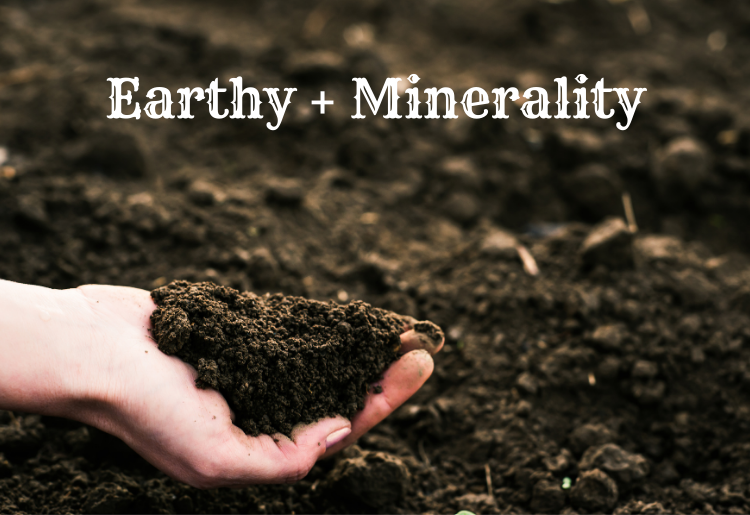
EARTHY + MINERALITY
Chalkboard. Wet gravel after rain. Forest floor. Turned soil in the garden. Earthiness and minerality are typically identified by dirt and rock qualities, respectively. Earthy can summarize a lot of elemental characteristics in the wine outside of fruit, spice or floral notes, often offering a savory or even umami quality to the wine. Mineral connects more to the “rock” attribute here, from wet stone to pencil lead, chalk and even briny notes like oyster shell and sea salt. Think: beets, black tea, slurping oysters, literal dirt.
Wines to find these attributes: Chardonnay, Sauvignon Blanc, Pinot Noir, Nebbiolo
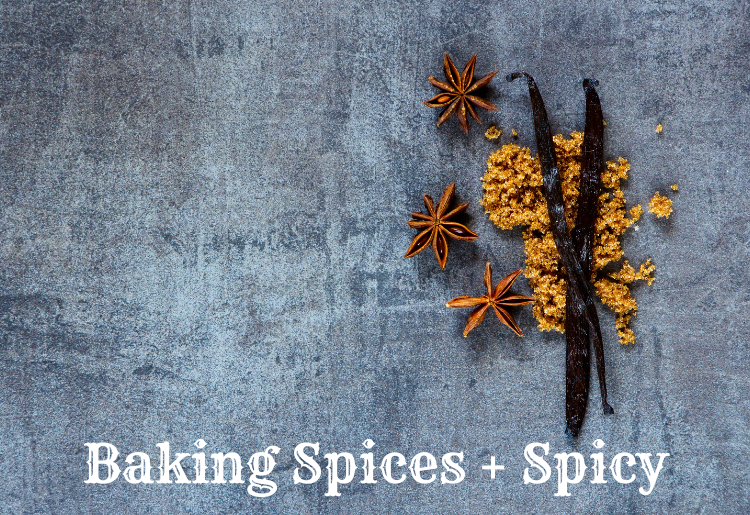
BAKING SPICES + SPICY
Grains of paradise. Christmas spices. Potpourri. These baking-spice notes all translate to cinnamon, clove, allspice, nutmeg, black pepper, cardamom … the list goes on, just check your spice rack. Baking spices are quite literally the elements you would add to your favorite baked goods and their aromatic and flavor profiles offer similar layers in a glass of wine. Spicy is along the same vein — not “spicy” in reference to heat or chili peppers, but to the aforementioned spices or even ginger-like notes. Think: pumpkin pie, snickerdoodles, tikka masala, freshly cracked pepper.
Wines to find these attributes: Syrah, Mourvedre, Grenache, Viognier
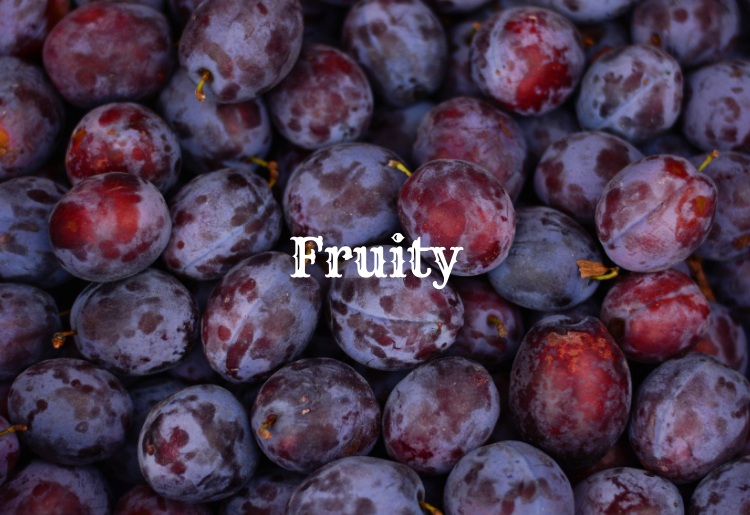
FRUITY
Fruit forward. Tropical. Ripe berries. This is a catch-all term for, you guessed it, fruit characteristics! More often than not, wines that are tagged as fruity are easy-drinking, approachable porch pounders, with identifiable fruit notes to them that won’t cause brain damage when trying to single them out. But just because they’re easy doesn’t mean they’re simple. Fruity can also be used to describe the inherent ripeness of fruit that is habitually confused for sugar sweetness in a completely dry wine. Think: biting into an apple, just-pressed watermelon juice, popping table grapes at a picnic.
Wines to find these attributes: Pinot Gris, Riesling, Sangiovese, Barbera
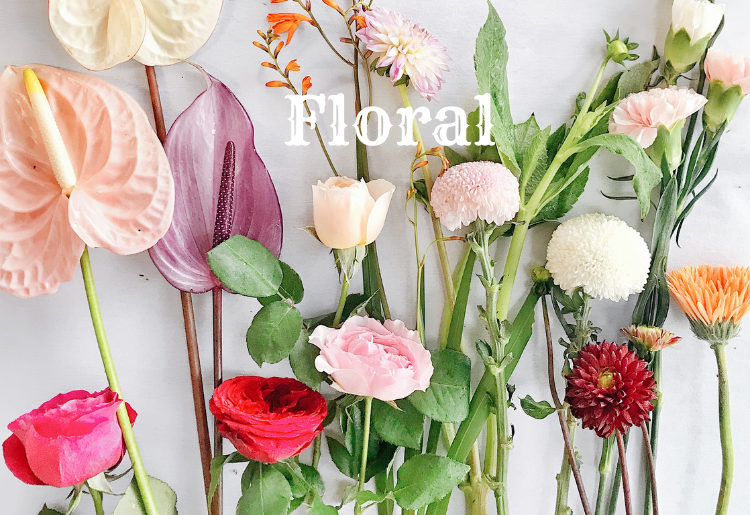
FLORAL
Orange blossoms. Violets, orchids, lilies, oh my! Dried flowers. Sweet resin. Floral notes are frequently used to detail an aromatic profile of a wine, but can sometimes be detected on the palate as well. Subtle like jasmine or apple blossom or intense like rose petal, lilac or hops (which can lean toward citrusy or resinous) — floral attributes add complexity and layers to a wine you didn’t know you wanted. Think: a farmers’ market bouquet, blooming fruit trees this time of year, the sweet pitch on your pants from rubbing against that tree while camping.
Wines to find these attributes: Gewurztraminer, Chenin Blanc, Pinot Noir, Malbec
Make sure to check back next week when we publish “Guide to Translating Wine Tasting Notes, Part 2.” Until then, make sure to exercise your palate by uncorking a few bottles!

